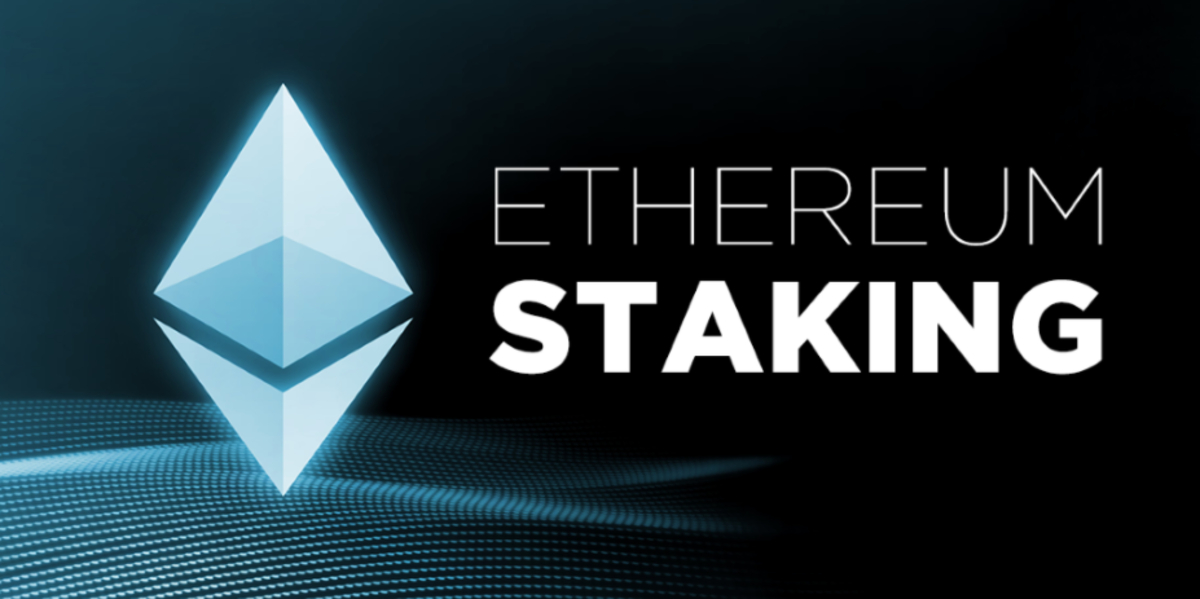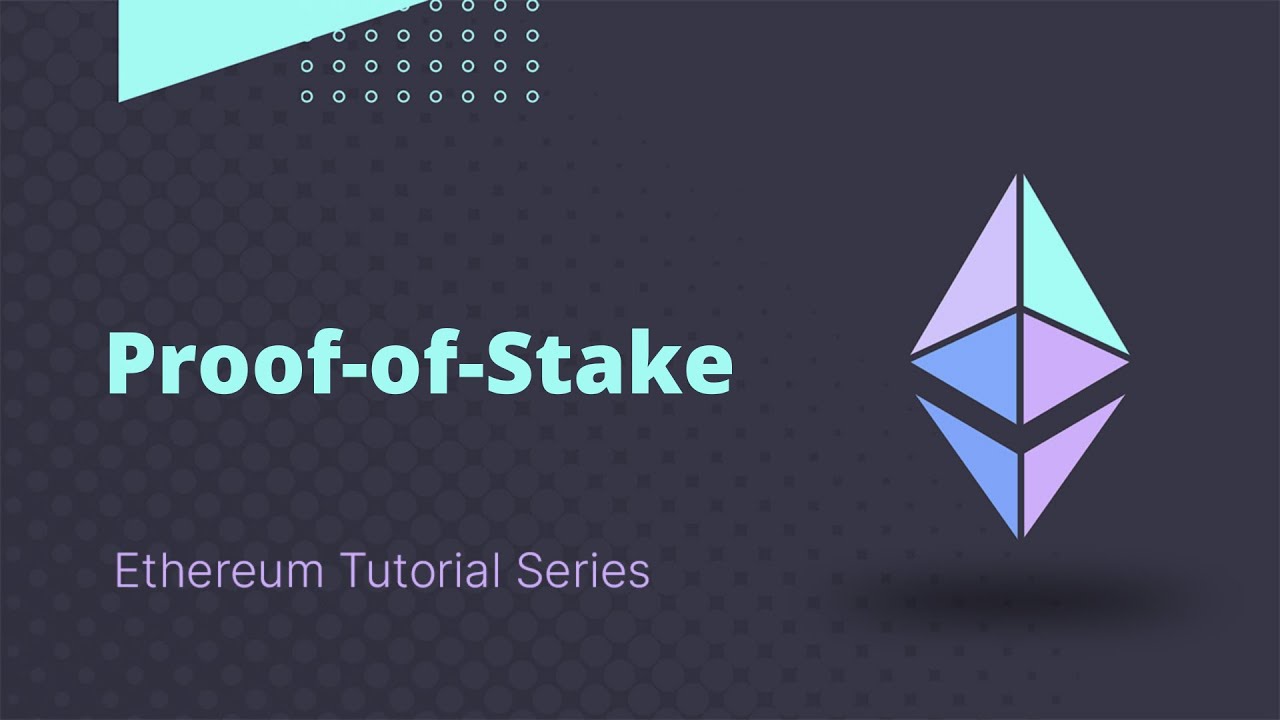Introduction
Ethereum, often referred to as the “king” of cryptocurrencies, is a decentralized, open-source blockchain platform that enables developers to build decentralized applications (DApps) and smart contracts. It was created by Vitalik Buterin in 2015 and has since gained massive popularity due to its robust infrastructure and revolutionary approach to blockchain technology.
As Ethereum continues to evolve, one of the most significant developments is the introduction of staking. Staking is a process where individuals lock up a portion of their cryptocurrency holdings to support the operations of a blockchain network. In return for their participation, stakers are rewarded with additional cryptocurrency.
Staking has become an integral part of the Ethereum ecosystem, offering a new way for participants to contribute to the network’s security and consensus mechanism. In this article, we will explore what exactly Ethereum staking involves, the benefits it brings, the potential risks, and how you can start staking Ethereum to earn passive income.
Now, let’s delve into the world of Ethereum staking and uncover its various aspects.
What is Ethereum?
Ethereum is a decentralized, blockchain-based platform that enables developers to build and deploy smart contracts and decentralized applications (DApps). Unlike Bitcoin, which primarily serves as a digital currency, Ethereum aims to provide a more versatile environment for developers to create and execute complex computational tasks.
The core technology behind Ethereum is its blockchain, a distributed ledger that records all transactions and smart contract executions. This blockchain is maintained by thousands of nodes (computers) spread across the globe, ensuring transparency, immutability, and security.
What sets Ethereum apart from traditional centralized systems is its ability to execute smart contracts. These are self-executing contracts with predefined rules and conditions encoded within them. Smart contracts enable trustless and automated transactions, removing the need for intermediaries and reducing the risk of fraud or censorship.
Ethereum’s native cryptocurrency is called Ether (ETH), which serves a dual purpose within the network. Firstly, it functions as a digital currency used to pay for transaction fees and computational services on the Ethereum platform. Secondly, Ether is used as an incentive for participants who engage in the Ethereum staking process.
Since its inception, Ethereum has seen exponential growth and adoption in various industries. It has become the foundation for a multitude of blockchain-based projects, ranging from decentralized finance (DeFi) platforms to non-fungible token (NFT) marketplaces. The Ethereum ecosystem thrives on innovation, allowing developers to create groundbreaking applications and revolutionize traditional industries.
As Ethereum continues to mature and evolve, it remains at the forefront of blockchain technology, empowering developers and users alike to participate in a decentralized and trustless digital economy.
What is Staking?
Staking is a mechanism employed by blockchain networks to secure their operations and achieve consensus. It involves participants locking up a certain amount of their cryptocurrency holdings as collateral, which is then used to validate transactions and create new blocks in the blockchain.
The concept of staking is primarily associated with proof-of-stake (PoS) consensus algorithms, which differ from the traditional proof-of-work (PoW) algorithm used by Bitcoin. In a PoS system, validators are chosen to create blocks based on the number of tokens they hold and are willing to “stake” as collateral. The more tokens a participant holds and locks up for staking, the higher their chances of being selected as a validator and earning rewards.
By staking their cryptocurrency, participants contribute to the network’s security and ensure its proper functioning. This process replaces the energy-intensive mining required in a PoW network. Staking not only reduces the carbon footprint associated with blockchain operations but also makes the network more scalable and efficient.
Staking rewards participants with additional cryptocurrency tokens for their commitment and contribution to the network. These rewards are typically generated through transaction fees or newly minted coins.
Staking is not limited to securing the network; it can also be used as a governance mechanism. In some blockchain networks, stakers have voting rights proportional to the number of tokens they hold and stake. They can influence network parameters, propose changes, and participate in decision-making processes.
Staking offers individuals the opportunity to passively earn income by holding and pledging their cryptocurrency. It aligns the incentives of participants with the overall success and security of the blockchain network.
Staking has gained significant popularity across various blockchain networks, including Ethereum, as it provides an alternative to traditional mining and allows individuals to actively participate in shaping the future of decentralized systems.
How does Staking work on Ethereum?
Staking on the Ethereum network involves locking up Ether (ETH) in a specialized staking contract to support the network’s security and consensus. Ethereum is transitioning from a proof-of-work (PoW) consensus algorithm to a proof-of-stake (PoS) algorithm called Ethereum 2.0, also known as Eth2 or Serenity.
Under the new PoS mechanism, individuals who hold and stake ETH become validators, responsible for proposing and validating new blocks in the Ethereum blockchain. The selection of validators is based on the number of ETH tokens they hold and are willing to lock up for staking.
Here’s a step-by-step overview of how staking works on Ethereum:
- Acquire Ether (ETH): The first step is to acquire ETH tokens. They can be obtained through cryptocurrency exchanges or various other methods.
- Create an Ethereum 2.0 Validator Deposit: Validators need to create a validator deposit by transferring a minimum of 32 ETH into the Ethereum 2.0 staking contract. This deposit serves as collateral and is locked up for a certain period.
- Set up a Validator Node: Validators must set up and maintain a Validator Node, which is responsible for participating in consensus and block validation. This requires technical knowledge and the use of specialized software.
- Participate in Validation: Validators play an active role in proposing and validating new blocks in the Ethereum blockchain. They are required to stay online and maintain a reliable internet connection to participate in the network’s consensus process.
- Earn Staking Rewards: In return for their staking efforts, validators earn staking rewards in the form of additional ETH tokens. The exact amount of rewards validators receive depends on various factors, including the amount of ETH staked and the overall network participation.
- Manage and Monitor Validator: Validators need to regularly monitor their validator node, ensuring it stays online, maintains optimal performance, and meets the requirements of the Ethereum network.
It’s important to note that staked ETH is not readily accessible and cannot be used or transferred until Ethereum 2.0 reaches Phase 2, which is the final phase of the network upgrade. Validators should be aware of the risks involved, including the potential for penalties or slashing in the event of malicious behavior.
Ethereum’s transition to a PoS consensus mechanism through Ethereum 2.0 aims to enhance the scalability, security, and sustainability of the network. Staking on Ethereum allows individuals to actively participate in securing and governing the Ethereum blockchain while earning passive income through staking rewards.
Benefits of Staking Ethereum
Staking Ethereum offers several benefits for participants, contributing to the overall strength and growth of the network. Here are some key advantages of staking Ethereum:
- Earn Passive Income: Staking Ethereum allows individuals to earn a passive income by staking their ETH holdings. Validators who actively participate in securing the network and validating transactions receive staking rewards in the form of additional ETH tokens. The more ETH you stake, the more rewards you can potentially earn.
- Contribute to Network Security: By staking Ethereum, participants actively contribute to the security and decentralization of the network. Validators who stake their ETH holdings become responsible for validating transactions and creating new blocks in the blockchain, thereby ensuring the network’s integrity and reliability.
- Align Incentives: Staking aligns the incentives of participants with the success and security of the Ethereum network. Validators who hold and stake a significant amount of ETH have a vested interest in maintaining the network’s stability and reputation. This alignment of incentives strengthens the overall health of the ecosystem.
- Support Ethereum 2.0 Development: Staking is an integral part of the Ethereum 2.0 upgrade, which aims to enhance the scalability, security, and sustainability of the Ethereum network. By staking ETH, participants actively contribute to the development and advancement of Ethereum 2.0, enabling the network to handle a larger number of transactions and become more energy-efficient.
- Reduce Environmental Impact: Unlike the energy-intensive mining process used in proof-of-work (PoW) networks, staking Ethereum in a proof-of-stake (PoS) consensus mechanism reduces the carbon footprint associated with blockchain operations. This shift towards PoS helps make Ethereum a more sustainable and environmentally friendly platform.
- Participate in Governance: Staking also provides participants with the opportunity to participate in the governance of the Ethereum network. Validators who stake ETH tokens often have voting rights proportional to the amount of ETH they hold, enabling them to propose changes or participate in decision-making processes regarding network upgrades, parameter changes, and protocol improvements.
Overall, staking Ethereum offers a range of benefits, including the potential for passive income, active network participation, alignment of incentives, contribution to Ethereum 2.0 development, reduced environmental impact, and the ability to shape the future of the network through participation in governance.
Risks of Staking Ethereum
While staking Ethereum offers attractive benefits, it’s important to be aware of the potential risks involved. Understanding these risks will help participants make informed decisions and take necessary precautions. Here are some key risks associated with staking Ethereum:
- Price Volatility: The value of Ethereum can be highly volatile, and staking involves locking up a significant amount of ETH for a specific period. If the price of ETH drops significantly during the staking period, participants may experience a loss in the value of their staked tokens.
- Technical Challenges: Staking Ethereum requires technical proficiency in setting up and maintaining a validator node. Participants need to ensure their infrastructure meets the requirements of the Ethereum network, including a reliable internet connection, optimal hardware, and software configurations. Failure to maintain the validator node properly can result in missed rewards or penalties.
- Slashing: Validators are exposed to the risk of slashing, which refers to the penalty or loss of staked ETH due to malicious behavior or downtime. Validators can be penalized if they fail to follow the network’s rules or engage in behavior that compromises the security and integrity of the Ethereum network. Slashing can result in substantial financial loss and a negative impact on reputation.
- Network Consensus: Validators in a proof-of-stake (PoS) network like Ethereum are chosen to validate transactions based on their staked amount. Validators with a larger stake have a higher probability of being selected. This concentration of power can lead to a less decentralized network and potential centralization risks.
- Technology Risks: Ethereum 2.0 is still in the process of being rolled out, and as with any new technology, there are potential risks and uncertainties. Bugs, vulnerabilities, or unforeseen technical challenges could impact the stability and security of the Ethereum 2.0 network, which may pose risks for validators.
- Regulatory and Legal Factors: Staking Ethereum may be subject to regulatory and legal considerations depending on the jurisdiction. Participants should be aware of the legal requirements and potential implications of staking ETH in their respective jurisdictions.
It is crucial for participants to carefully consider these risks and conduct thorough research before engaging in Ethereum staking. Proper risk management strategies, staying updated with the latest developments, and following best practices can help participants mitigate potential challenges and safeguard their investments.
How to Stake Ethereum?
Staking Ethereum involves several steps to start earning staking rewards. Here’s a general guide on how to stake Ethereum:
- Acquire Ether (ETH): The first step is to acquire Ethereum by purchasing ETH tokens from a reputable cryptocurrency exchange. Ensure that you have enough ETH to meet the minimum staking requirements.
- Choose a Staking Method: There are multiple ways to stake Ethereum, depending on the level of technical expertise and the amount of ETH you have. You can choose to stake on your own by setting up a validator node or opt for third-party staking services offered by Ethereum staking platforms.
- Set up a Validator Node: If you prefer to stake on your own, you will need to set up a validator node. This involves configuring and running Ethereum 2.0 client software, such as Prysm, Lighthouse, or Teku. You’ll also need a dedicated server or a computer that meets the technical requirements of the chosen client software.
- Deposit ETH and Generate Keys: With your validator node set up, you’ll need to deposit the required amount of ETH (currently 32 ETH) into the Ethereum 2.0 staking contract. This deposit serves as collateral and allows your validator node to participate in the staking process. The process will also generate public and private keys that you need to keep secure.
- Start Validating: Once your ETH deposit is confirmed, your validator node will start participating in the Ethereum 2.0 consensus process. It will validate and propose blocks, contributing to the network’s security and earning staking rewards in return.
- Maintain Your Validator Node: It is essential to actively monitor and maintain your validator node. Ensure that it stays online, synced with the Ethereum 2.0 network, and meets the uptime requirements. Regularly update the client software to benefit from bug fixes and security patches.
- Monitor and Collect Rewards: Regularly check the performance of your validator node, including the number of blocks validated and any potential penalties or rewards. You can track your earnings through the Ethereum 2.0 client interface or specialized staking platforms. Staking rewards are automatically added to your staking balance.
- Withdraw Staked ETH: It’s important to note that staked ETH is not immediately accessible or transferable. Ethereum 2.0 is being rolled out in multiple phases, and the exact timeline for withdrawals will depend on the development progress. It’s essential to stay updated with Ethereum’s roadmap and follow the instructions provided by the Ethereum community.
Keep in mind that staking Ethereum requires technical knowledge and comes with certain risks, as mentioned earlier. If you do not have the technical expertise or prefer a hassle-free experience, you can opt for third-party staking platforms that simplify the staking process. These platforms handle the technical aspects of staking on your behalf, but they may charge fees or require minimum staking amounts.
Before you begin staking Ethereum, make sure to thoroughly research and understand the staking method you choose, including the associated risks and requirements. Consulting official Ethereum documentation, participating in community discussions, and seeking advice from experienced stakers can help you navigate the staking process effectively.
Popular Ethereum Staking Platforms
As Ethereum continues to transition to the Ethereum 2.0 network, there are various staking platforms that simplify the staking process and offer additional features. These platforms allow individuals to stake their Ethereum without the need to set up and maintain their own validator nodes. Here are some popular Ethereum staking platforms:
- Beacon Chain: Launched by the Ethereum Foundation, Beacon Chain serves as the backbone of Ethereum 2.0. It allows users to stake their ETH and participate in the consensus process. Beacon Chain provides a user-friendly interface for staking and offers detailed information on staking rewards and validator activity.
- Stkr: Stkr is a decentralized staking platform that enables users to stake Ethereum easily. It offers a non-custodial solution that allows users to maintain full control over their funds. Stkr also provides automatic re-staking of staking rewards, compound interest, and flexible withdrawal options.
- BitMax: BitMax is a popular cryptocurrency exchange that offers Ethereum staking services. Users can stake their ETH directly on the exchange and earn staking rewards. BitMax provides a secure and convenient way to participate in Ethereum staking, with competitive returns and a user-friendly interface.
- StakeWise: StakeWise is a decentralized staking platform that enables users to stake their Ethereum while maintaining liquidity. It allows users to stake ETH and receive stETH tokens in return, which represent their staked ETH balance. StakeWise offers customizable options, regular staking rewards, and the ability to trade stETH on decentralized exchanges.
- Ankr: Ankr is a blockchain infrastructure platform that offers Ethereum staking services. It provides a user-friendly interface, allowing users to stake their ETH and participate in the Ethereum 2.0 network. Ankr also offers features such as automatic re-staking of rewards and a simplified staking process.
- Rocket Pool: Rocket Pool is a decentralized Ethereum staking platform that allows users to stake their ETH and earn rewards. It provides a pool-based staking solution, allowing users to participate in staking even with smaller amounts of Ethereum. Rocket Pool aims to provide security, decentralization, and flexibility in Ethereum staking.
These are just a few examples of popular Ethereum staking platforms, and the list continues to grow as Ethereum 2.0 gains more adoption. It’s essential to conduct thorough research, understand the functionality and fees of each platform, and consider factors such as security, reputation, and user experience before choosing a staking platform.
Remember to also consider the risks associated with staking on third-party platforms, such as potential centralization risks or the possibility of platform failures. It’s recommended to diversify your staking participation across different platforms to mitigate any potential risks.
By choosing a reliable and reputable Ethereum staking platform, individuals can easily participate in the staking process and earn rewards while supporting the ongoing development and growth of the Ethereum network.
Conclusion
Ethereum staking presents an exciting opportunity for individuals to actively participate in securing and contributing to the Ethereum network while earning passive income. As Ethereum transitions to the Ethereum 2.0 network, staking becomes an integral part of its consensus mechanism, bringing benefits such as passive income, network security, and alignment of incentives.
By staking Ethereum, participants have the chance to earn rewards in the form of additional ETH tokens. It allows individuals to contribute to the decentralization and security of the network, ensuring its integrity and reliability. Furthermore, staking supports the development and advancement of Ethereum 2.0, leading to a more scalable, sustainable, and environmentally friendly platform.
While staking Ethereum offers attractive benefits, it’s important to mitigate the risks associated with price volatility, technical challenges, slashing, and potential centralization. Proper risk management, staying informed about Ethereum’s progress, and following best practices are essential for successful and secure staking.
Participants can choose between setting up their own validator nodes or utilizing third-party staking platforms that simplify the staking process. It’s crucial to select reliable and reputable platforms, considering factors such as security, fees, reputation, and user experience.
As Ethereum staking continues to evolve, individuals should stay informed about the latest developments, network upgrades, and regulatory requirements. Engaging with the Ethereum community and conducting thorough research can help participants navigate the staking process effectively.
In conclusion, staking Ethereum provides an exciting opportunity to be an active participant in the growth and success of the Ethereum network. By staking Ethereum, individuals can contribute to network security, earn passive income, and play a role in shaping the future of decentralized finance and blockchain technology.

























